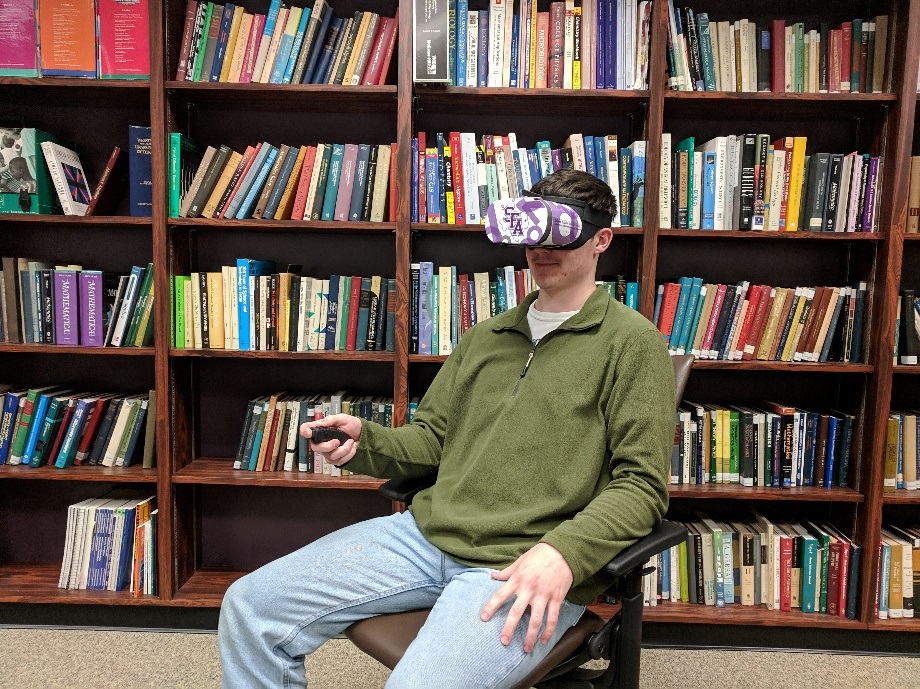Smartphones are typically not welcomed in classrooms because of how distracting they can be. But at Stephen F. Austin State University (SFASU), calculus are encouraged to use their phones to access the app Calculus in Virtual Reality—CalcVR for short—an app that uses virtual reality (VR) to help students learn about multivariable calculus.

CalcVR lets students explore curves, surfaces, and shapes in VR with headsets and additional Bluetooth controllers. Though the app was initially released in August 2017, development and expansion of the app is an ongoing project, all funded by a grant from the National Science Foundation. According to Nick Long and Jeremy Becnel, the visionaries behind the app, “We recently added new lessons and demos involving multivariable functions and vector fields and have plans for several additional areas of content. Based on feedback from a recent advisory board meeting, we will incorporate enhancements and improvements to the app. The creation and improvement of activities and explorations that complement the app will be a focus in the next year. We are currently testing an exploration into quadric surfaces using a demo in the app.” You can find the CalcVR app on Google Play and the Apple App Store.
As more and more educational institutions hop on board the VR train, most of them are focused on developing VR experiences for students in the biological sciences, from Colorado State University’s biomedical VR lab to La Trobe University’s extended reality (XR) programs. And, while CalcVR is available to everyone, it too is aimed at university-level students.
Nick Babich, an Adobe developer with a keen interest in VR education, said that, while VR could revolutionise modern education, “At the same time, the next big thing in education no longer relies on technology, but rather on a teacher’s decision to push forward and adopt these technologies inside the classroom.”
If VR has been shown to be such an effective educational tool, then why hasn’t every university implemented immersive VR learning? Because, all across the board, the most difficult hurdle for adopting VR inside the classroom is the cost, followed up by concerns with ease of use, accessibility to quality content, and adaptability. Institutions like Colorado State and La Trobe have the resources to invest in educational VR programming and SFSAU was able to secure a grant to fund the development of CalcVR. But for smaller institutions and even grade schools, VR technology remains a hypothetical instead of a reality. But if Apple has been able to get their most recent tech down to $700 (the cost of the new iPhone 11), there’s hope that VR can also become more accessible at a better price point in order to boost education for notoriously difficult school subjects like math.





